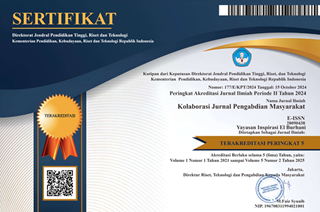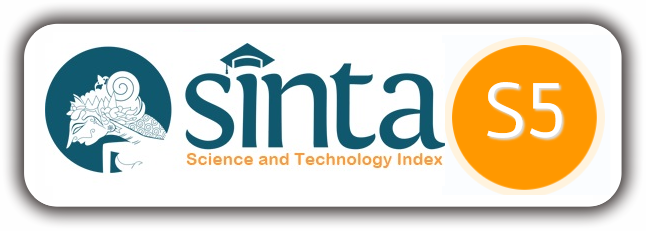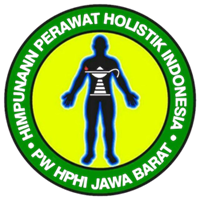Membangun Kemandirian Perilaku Personal Hygiene Pada Lansia Di Panti Jompo Welas Asih Tasikmalaya
DOI:
https://doi.org/10.56359/kolaborasi.v3i5.311Kata Kunci:
Personal Hygine, Elderly, Nursing HomeAbstrak
Introduction: The increase in the number of elderly will affect various aspects of elderly life, especially the health and welfare of the elderly. One effort to improve and maintain the health of the elderly is by maintaining personal hygiene. The need for personal hygiene must be a top priority for the elderly because good personal hygiene means that the elderly have a low risk of experiencing infectious diseases of the eyes and ears.
Objective: Increase the knowledge and independence of elderly people in meeting basic personal hygiene needs with the number of activity participants totaling 24 elderly people in the active elderly category.
Method: Implementation of community service is carried out through stages: Preparation, Socialization, Implementation of Activities (Explanation of material, Simulation and Evaluation) and Closing.
Results: Based on the results of calculating the pre-test and post-test scores for providing education and simulation, data showed that there was a significant increase in the knowledge of the elderly, from an average pre-test score of 35 to 85. The average post-test score had increased in results. post-test was 50, with the highest score on the post-test being 90 (14 people).
Conclusion: Based on the results of the evaluation of Community Service activities, the picture of understanding about efforts to increase independence and awareness of personal hygiene in the elderly through education and simulation after being provided with education has increased significantly.
Unduhan
Referensi
Adyatama, Egi. (2016). Pemerintah Diminta Waspadai Lonjakan Jumlah Lansia Indonesia. Diakses melalui: https://m.tempo.co/read/news/2016/05/23/173773310
Alfina, Shofia. 2009. Hubungan antara gangguan gerak dan fungsi kognitif pada wanita lanjut usia panti wredha. USM. Surakarta
Darmojo, R.B dan Mariono, H.H. (2014). Geriatri (Ilmu Kesehatan Usia Lanjut). Edisi ke-6. Jakarta: Yudistira
Efendi, M. (2013). Keperawatan Kesehatan Komunitas. Jakarta: Salemba Medika
Gateaway. (2013). Gerontological Nursing Competencies for Care (2nded). Sudbury: Janes and Barlett Publisher
Hidayat. (2012). Kebutuhan Dasar Manusia. Jakarta: Salemba medika
Kemenkes. (2022). Infodatin. Pusat Data dan Informasi Kementrian Kesehatan Republik Indonesia. Lansia Berdaya, Bangsa Sejahtera. Jakarta: Kementerian Kesehatan RI. 2019. https://www.kemkes.go.id
Kuntoro.(2015). Penyakit Diusia Tua. Jakarta: Yudistira
Lopes, O. R. D. F., Mudayati, S., & Candrawati, E. (2018). Hubungan Pengetahuan Tentang Kebersihan Diri Dengan Tingkat Kemandirian Melakukan Aktivitas Personal hygiene Lansia. Nursing News: Jurnal Ilmiah Keperawatan, 3(1)
Maryam. (2011). Mengenal Usia Lanjut dan Perawatannya. Jakarta: Salemba Medika
Potter, P.A, dan Perry, A.G. 2005 buku Ajar Fundamental Keperawatan: Konsep, Proses, Dan Praktek. Edisi 4. Jakarta: EGC.
Saryono dan Widianti, Anggriyani Tri (2011). Kebutuhan Dasar Manusia (KDM). Yogyakarta: Nuha Medika
Santrock, J. W. (2013). Educational Psychology. Risālat al-Tarbiyah wa-ʻIlm al-Nafs, 186(1011), 1-8
Vina dan Fitrah.(2010). Memahami Kesehatan pada Lansia. Jakarta: Trans Info Media)
Yulaikhah, D., Arisdiani, T., & Widiastuti, Y. P. (2017). Perilaku Personal Hygiene Lanjut usia. Jurnal Keperawatan, 9(2), 44-51.
Unduhan
Diterbitkan
Cara Mengutip
Terbitan
Bagian
Lisensi
Hak Cipta (c) 2023 Aneng Yuningsih

Artikel ini berlisensi Creative Commons Attribution 4.0 International License.












